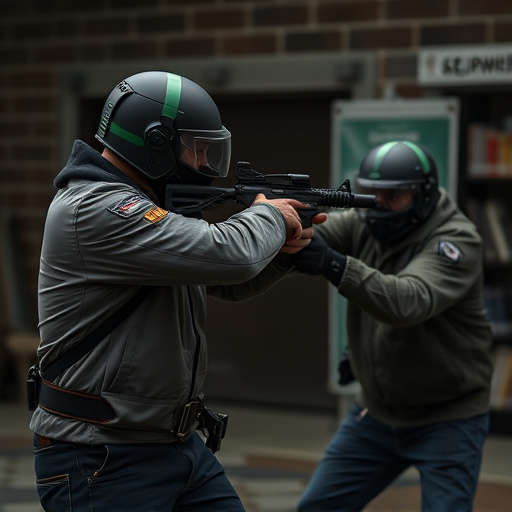Understanding state-specific laws is vital for legal pepper spray carriage. Tactical training equips individuals with knowledge on usage, handling, and regional guidelines. Carrying pepper spray for self-defense requires awareness of local regulations and storage options. Users must research legalities to ensure effective, safe deployment as a peace-of-mind tool. Focus on learning "How to Legally Carry Pepper Spray" to avoid legal issues.
In today’s world, being prepared for unexpected threats is paramount. One effective self-defense tool gaining traction is the tactical inflammatory spray, also known as pepper spray. This versatile defense system offers individuals a powerful means of deterring potential assailants. However, navigating the legalities surrounding its possession and use can be complex. This article guides you through understanding state-by-state regulations on how to legally carry pepper spray, providing insights into tactical training, carrying options, and ensuring safety.
- Understanding Pepper Spray Legalities: State-by-State Guidelines
- Tactical Training: Effective Use and Safety Measures
- Carrying Options: Wallets, Holsters, and Legal Requirements
Understanding Pepper Spray Legalities: State-by-State Guidelines
In the United States, pepper spray, also known as oleoresin capsicum (OC) spray, is a popular self-defense tool, but its legality and usage guidelines vary significantly from state to state. Understanding how to legally carry pepper spray starts with knowing these regional differences. Some states allow citizens to carry pepper spray for personal protection without a permit, while others require permits or registration.
When it comes to how to legally carry pepper spray, certain states have specific requirements regarding the type of spray allowed (e.g., concentration, size), where it can be carried (open or concealed), and who is permitted to possess it (age restrictions, criminal history considerations). For instance, California permits the carrying of up to 2% OC spray in an amount not exceeding 6 oz, while Texas allows both concealed and open carry with a permit. Always consult your state’s local laws and guidelines before purchasing or using pepper spray for self-defense.
Tactical Training: Effective Use and Safety Measures
Tactical training is an essential component of any defense system involving pepper spray. It equips individuals with the knowledge and skills to use this tool legally and effectively, ensuring their safety and that of others. Training programs cover a range of topics, from understanding the chemical composition of pepper spray to mastering application techniques. Participants learn proper handling procedures, safe storage, and de-escalation strategies, enabling them to respond calmly under pressure.
During training, individuals are taught how to legally carry pepper spray, adhering to regional regulations. This includes learning about permitted usage scenarios, such as self-defense or law enforcement operations, and understanding the potential consequences of misuse. Safety measures are paramount; trainees are instructed on avoiding exposure and proper personal protective equipment (PPE) use. Regular practice sessions reinforce these skills, ensuring users are prepared for real-world situations while prioritizing safety and responsible spray deployment.
Carrying Options: Wallets, Holsters, and Legal Requirements
Carrying options for tactical inflammatory spray vary, but understanding how to legally do so is paramount. Many users opt to store their pepper spray in wallets or holsters, choosing discreet and readily accessible methods. Wallets offer a compact solution, especially for smaller units, while holsters provide better grip and visibility, making them popular among those prioritizing quick deployment.
Legal requirements surrounding the carry of pepper spray differ by region. It’s essential to research local laws and obtain any necessary permits or licenses. Understanding these regulations is key to ensuring compliance and avoiding legal repercussions. Knowing how to legally carry pepper spray enhances its effectiveness as a self-defense tool, offering peace of mind in potentially dangerous situations.
Understanding state-specific legalities, undergoing proper tactical training, and selecting appropriate carrying options are key components for anyone considering how to legally carry pepper spray. By staying informed about local regulations, mastering safe handling practices, and choosing the right equipment, individuals can effectively protect themselves while adhering to legal requirements. Always remember, responsible ownership and knowledge of your rights are paramount when it comes to self-defense tools like tactical inflammatory spray.
